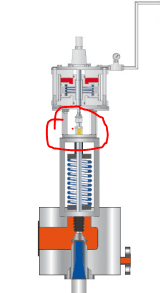Raai2015
Chemical
- Jun 21, 2008
- 61
As subject, most of us knows , conventional springloaded safety valve has checknut in the bonnet which will keep the spring during operation , when it reaches the set pressure , spring will be compressed against the checknut by steam and releive it.
In the Pneumatic, air pressure will act on the diaphragm on both side, when it reaches the set pressure , lift air pressure is activated and relieves the pressure. Queries are,
1. How the construction of spring on the pneumatic operation , specifically cecknut portion? Because i received the offer which says pneumatic supplementary safety valve but it has the check nut.
2. Basic clarification. Pneumatic air is supplied with 5 bar. But the set pressure is 92bar . How does pneumatic air with 5 bar loading and lifting the 92 bar steam?
In the Pneumatic, air pressure will act on the diaphragm on both side, when it reaches the set pressure , lift air pressure is activated and relieves the pressure. Queries are,
1. How the construction of spring on the pneumatic operation , specifically cecknut portion? Because i received the offer which says pneumatic supplementary safety valve but it has the check nut.
2. Basic clarification. Pneumatic air is supplied with 5 bar. But the set pressure is 92bar . How does pneumatic air with 5 bar loading and lifting the 92 bar steam?

